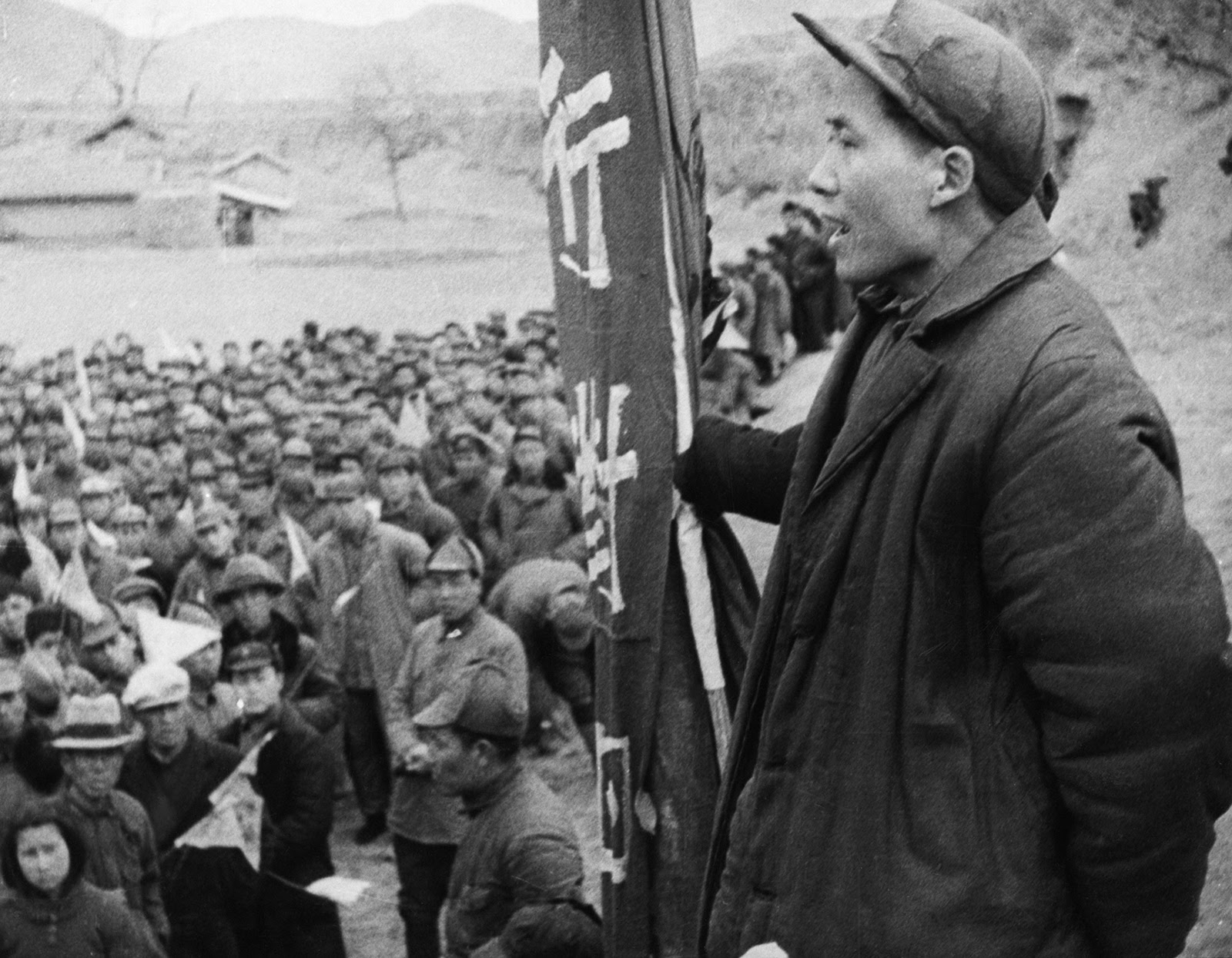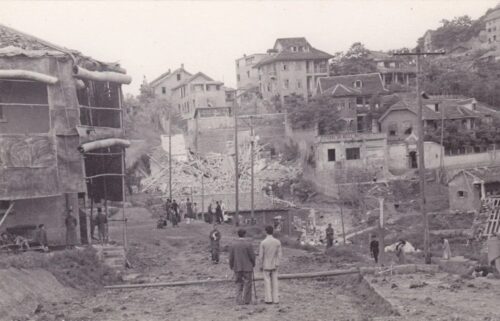This Week in China’s History: January 5, 1941
One of the most significant battles of World War II began in the first week of January 1941. Involving some 90,000 troops and lasting more than a week, the fighting altered the course of the war and — more importantly — fundamentally reshaped the world that came after. Amid charges of treachery and incompetence, losses were heavily concentrated on one side, although many argue that those defeated in the field were the winners in the long run. Bitterness and recriminations lasted long after the war was over, and the fight over the battle’s history was, in its own way, fierce as the event itself.
And everyone was on the same side.
This New Fourth Army (or Wǎnnán 皖南) Incident has been a source of confusion and contention for 70 years. Historian Gregor Benton, in his encyclopedic history of the New Fourth Army, dedicated nearly 300 pages (of a 1,000-page book) to the incident, and Chinese-language scholarship on the event would fill many libraries. That so much ink has been spilled on the events of that winter hints at its complexity.
To begin with, what was the New Fourth Army? Its roots lay in the most fundamental of Communist Party origin myths: the Long March that began in October 1934, when Communist forces in the mountains of Jiangxi made their escape from the “annihilation campaigns” of the Nationalists. Most of the Communist forces embarked on a yearlong trek that culminated, after devastating casualties, in Yan’an where they regrouped. Those who survived gained revolutionary bona fides that legitimated a generation of CCP leaders from Máo Zédōng 毛泽东 through Dèng Xiǎopíng 邓小平.
Not all of the Communist troops went on the Long March though. Some guerillas remained behind in the mountains.
These forces continued their fight against the Nationalists for three years, documented in another Benton book, the Levenson Prize-winning Mountain Fires, as Chiang Kai-shek (蒋介石 Jiǎng Jièshí) continued to prioritize eradicating Communism in China over fighting the Japanese. Finally, in the winter of 1936, Chiang was compelled (in a story for another time!) to join forces with the Communists in a so-called Second United Front. Communists and Nationalists were now officially allied against a common Japanese enemy.
As war spread across the mainland in 1937, Communist forces were organized into two different units that were formally part of the Nationalist army but under the immediate command of Communist officers: the Eighth Route Army operated in North China, while the New Fourth Army, south of the Yangtze, comprised the guerillas who had stayed behind after the Long March. (Besides these two units, local, independent Communist troops operated autonomously in areas throughout China.)
The New Fourth Army epitomized the contradictions within the Second United Front. The alliance was always uneasy. After all, the First United Front had ended when the Nationalists betrayed and all but exterminated their Communist Allies in 1927. In the decade that followed, Chiang had retained military advisors from Nazi Germany to help finish them off. Now, theoretically under Nationalist Party command, Communist soldiers and officers remained suspicious that Chiang had merely postponed, not abandoned, his goal of eliminating Communism and it.
For their part, the Nationalists feared that besides fighting the Japanese, the Communists were spreading their message of social reform, national unification, and economic redistribution. They weren’t wrong. Building popular support was critical to Communist survival, especially since they, like the Nationalists, had one eye on an anticipated future civil war for China’s fate.
Nationalist leaders quickly came to regret having permitted a Communist presence in the Yangtze valley. Unlike remote Yan’an, far in the northwest, the New Fourth Army had access to resources, supplies, and — most importantly — population. Realizing this, the Nationalists ordered the Communists to move all of their forces north of the Yangtze. The attempt shredded the already fraying alliance. In October 1940, Nationalist troops attempted to take the town of Huangqiao 黄桥, not far from Yangzhou, from Communists to disastrous effect: more than 10,000 KMT troops killed, and huge quantities of arms and ammunition captured after a pitched battle.
After Huangqiao, pretenses collapsed. Communist forces redoubled their efforts to spread their message and build their forces, Nationalists devoted more and more attention against their allies rather than their enemies. Chiang issued an ultimatum that all Communist forces — mainly, the New Fourth Army — had to be north of the Yangtze valley by the end of 1940.
Benton argues that Chiang had three goals for wanting to evict the New Fourth Army from the Yangtze valley. First, removing the Communist forces would ease the tension that came with the conflicting and overlapping jurisdictions in the region, problems that had contributed to the debacle at Huangqiao. Second, sending the Communists north would engage them in a destructive and potentially debilitating campaign against Japanese forces arrayed there. Finally, and most long-term, Chiang wanted the Communists away from his once-and-presumably-future capital at Nanjing, lest they confound his postwar plans.
The Communists’ reaction was unclear. Benton suggests that the Communist leadership was not unhappy with the prospect of uniting its forces. On the other hand, losing a presence in the Yangtze valley had costs. In any event, at the end of December 1940, Communist armies remained south of the Yangtze River.
Notwithstanding Chiang’s various motives, Chiang Kai-shek used the Communists’ failure to comply with his orders as justification for eliminating their forces. Chiang ordered his troops to surround the New Fourth Army, which they did in the mountains at the town of Maolin 茂林, in Anhui, not far from the borders with Jiangsu and Zhejiang. The Nationalist forces outnumbered the Communists by about 10 to 1.
Mainland orthodoxy blames what happened next on Communist commander Xiàng Yīng 项英. Despite Mao’s orders to move quickly, Xiang delayed and fell into Chiang’s trap; Benton, though, argues that Xiang’s actions were far from decisive, given the circumstances. (Xiang made a convenient scapegoat, and is at the heart of many conspiracy theories, egged on by the fact his own subordinates murdered him over stolen gold reserves a few months later.) In 10 days of fighting, beginning on the night of January 6, 1941, 7,000 of the 9,000 Communist troops were killed or captured. In the following weeks, Chiang Kai-shek ordered the New Fourth Army disbanded.
That was not the end of it, though. Many Chinese were outraged by Chiang’s attack against his allies while China was fighting for survival against a foreign aggressor. International observers were likewise dismayed that the Nationalists were ambushing their own forces.
And though the loss of so many troops was a blow, the Communists did not accept Chiang’s order to disband, but reorganized the New Fourth Army, this time under the command of Chén Yì 陈毅 and outside the authority of the Nationalist command structure. The (Newer?) New Fourth Army was larger and based south of the Yangtze. Under the direction of the Communists, it engaged Japanese forces extensively during the last years of the war and continued into the Civil War, when it once again fought against the Nationalists. It was merged into other units in 1947.
In decades that followed, the New Fourth Army Incident became a touchstone, illustrating either Communist disobedience or Nationalist treachery, in both cases proving that the other side was too selfish to commit to cooperation against the Japanese. Although the Nationalists and Communists — led by Chiang Kai-shek and Mao Zedong respectively — continued their alliance through the defeat of Japan, from January 1941 onward, it may have been a foregone conclusion that they would wind up fighting one another for control of China.
This Week in China’s History is a weekly column.






